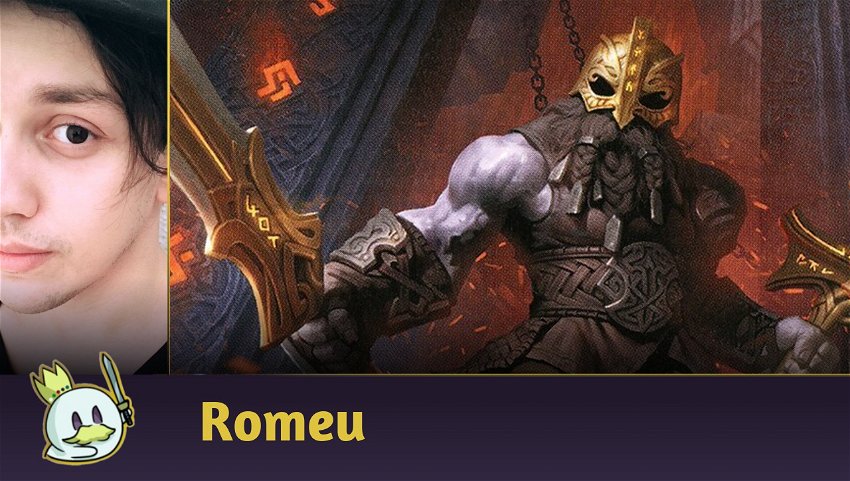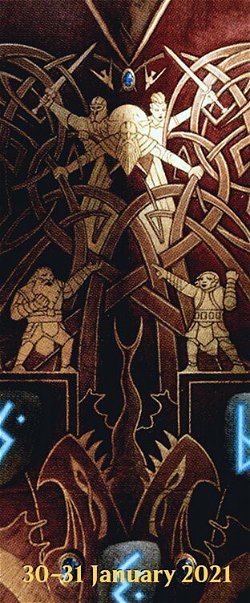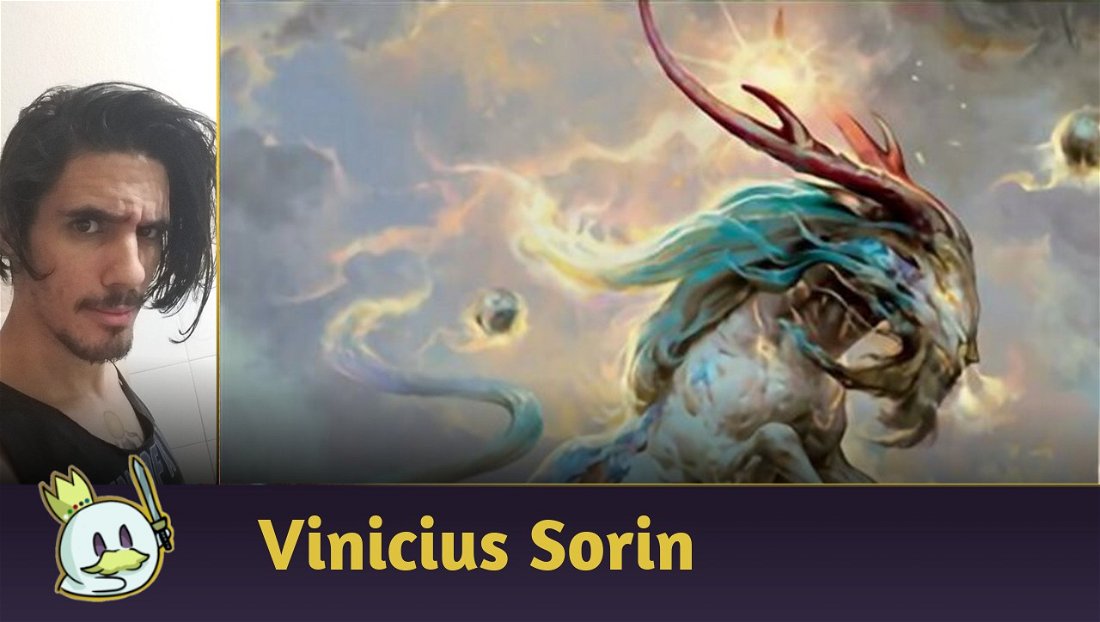Among the most diverse novelties that Kamigawa: Neon Dynasty brought, I believe that the one that received some relevant additions, but didn't generate so much hype in the community, were the Enchantments - something understandable, since we were graced with many things simultaneously in the new release : Ninjas, Vehicles, Phyrexians, Legendary Dragons, etc.
However, enchantments have been getting certain secondary supports for a while, like in Innistrad: Crimson Vow, where we had the Disturb mechanic being coupled to Auras, and cards like Katilda, Dawnhart Martyr and Hallowed Haunting being powerful payoffs for this strategy, but the enchantments support in Neon Dynasty doesn't specifically aim for a theme similar to the Enchantresses we see in Modern and Legacy, but towards something closer to Bogles or Orzhov Auras, where you assign enchantments to your creatures and receive benefits for it, making the risk of a 2-for-1 through an opponent's removal mitigated by the amount of value gained at the time you cast the spell.
Ad
And in that scenario, there's a combination between two creatures that essentially lets you cast certain spells for free:

Runeforge Champion was always one of those creatures that did something interesting and had some potential if more Runes were released in later sets, but its combination with Jukai Naturalist allows you to cast any spell that has the type “Rune” without paying its mana cost, as Runeforge Champion allows you to pay one colorless mana instead of the cost of any Rune, while Jukai Naturalist reduces this cost to 0.
This combination, along with a number of other additions that reward the player for playing with enchantments, has given rise to Naya Runes, which has had a string of excellent results this past weekend and stands out as yet another potential competitor in the Neon Dynasty Standard!
The Decklist
I will be using as an example the list that Rastaf used to get second place in the Standard Challenge, as it constitutes everything that seems essential to the archetype today.
Overall, Naya Runes' strategy is relatively simple and linear: you play your payoffs in the first few turns, like Generous Visitor or Kami of Transience, or your enablers, Jukai Naturalist and Runeforge Champion and then start casting your Runes for profit through your creatures or other enchantments, and draw more cards, keeping your resources running
You also have Showdown of the Skalds which, in addition to giving you four more cards to use during a turn or two, also offers a way to increase the power of your creatures, being notoriously devastating alongside Runeforge Champion and Jukai Naturalist if you have some runes in hand or in exile.
If the plan to attack with creatures eventually fails due to removals and sweepers, the player can also still rely on Hallowed Haunting to be able to play over the top and get a reward for casting enchantments even when your creatures are small for the battlefield, as its tokens can quickly multiply and become threats in a turn or two.
Another very relevant point is that interactions do not end only between Runes and enchantment cost reduction: Jukai Naturalist is an Enchantment Creature, being able to trigger Generous Visitor, Kami of Transience or Hallowed Haunting when cast, while tokens created by Hallowed Haunting benefit from the fact that Generous Visitor and Kami of Transience are spirits.
Due to this mix of elements between an aggressive, linear and fast game plan, and with the potential to be able to keep the pace or create constant threats with Hallowed Haunting, Naya Runes manages to behave well against a significant portion of the Metagame, and drew attention for achieving three Top 8 placements in Sunday's Standard Challenge, as well as other good placements in the most diverse Magic Arena events last weekend.
Maindeck
For starters, we can categorize the creatures by two specific types: Enablers and Payoffs.
Ad

Enablers are creatures that allow you to enable the archetype's proposal by offering some cost reduction or card advantage so that the player can stay ahead of the opponent.
As for this list, we have Jukai Naturalist which, for a low cost, reduces the cost of all your enchantments (and Showdown of the Skalds or Hallowed Haunting for three mana are significantly more devastating), while a 2/2 body with Lifelink also makes a good target for Auras or the +1/+1 counters spread by Generous Visitor, especially against other aggressive decks.
Runeforge Champion also offers a cost reduction, but for a specific category of enchantments: The Runes. And while it doesn't speed up more powerful enchantments, it replenishes your hand with at least one Rune of your choice, while also securing a body on the board to enchant it and draw one more card.

In the Payoffs category, we have creatures that grow (or grow other creatures) as you cast enchantments and, despite being mechanically similar, both have distinctions that make them better or worse depending on the occasion by rewarding different proposals during a match.
Generous Visitor, for the mere cost of one green mana, gives you the ability to put +1/+1 counters on any creature you control when you cast an Enchantment, which is very useful in distributing the power increase among threats, or making a specific creature bigger, so it can survive against blockers, or just for dealing as much damage as possible in a single turn.
Kami of Transience only puts +1/+1 counters on itself, but it grows significantly better since it has Trample, and also offers a recurring threat, as it can be returned from the graveyard to your hand if an enchantment is put into the graveyard from the battlefield.

While not a creature, Hallowed Haunting is possibly the most powerful mid-game payoff, giving you a new body on the battlefield for each enchantment you cast in a row and making them grow exponentially, being able to close the game in one or two turns with the appropriate sequence if the opponent fails to interact with it.

Runes don't do much for their cost and their boosts aren't very relevant on their own, but in a list with numerous interactions with enchantments and with cost reduction, they essentially function as cantrips with benefits as per trigger on your permanents, as well as providing you with ways to set more pressure, give one of your creatures evasion, or secure a race against other Aggro decks.

Commune with Spirits is a great way to find the best enchantments you have for just one mana, while it can also be useful for securing your land drops in the early game, essential for maintaining consistency in a list that has a few relatively greedy color requirements.
Ad
Showdown of the Skalds is one of the best spells from Kaldheim, and probably the best enchantment in the deck, as it offers significant card advantage while also functioning as a payoff when adding +1/+1 counters with any spell that you cast over two turns, functioning as an improved Generous Visitor, as well as being one of the main reasons the archetype manages to succeed even when the game goes on too long.

The only one-of on Rastaf's list is Touch the Spirit Realm, which works as a removal similar to Thopter Arrest, but that also serves to exile a creature temporarily through Channel, bringing in some relevant interactions to protect one of your threats (although all Auras and counters attached to it will be removed), or exile an opponent's creature for a turn if played at the End Step, or to remove the legal target of an Aura, among other possibilities that open space for numerous meticulous plays with a single card.

While there are trade-offs when choosing the side of each Pathway in three-color decks, they are still the best duals available in Standard and the best option for adding consistency to an archetype that notoriously wants all of its lands to come into play untapped.

Innistrad's Slow Lands work as additional manafixing and do a good job of complementing consistency with a small concession with the occasional times they will be your initial land drops.

Channel Lands serve as additional pseudo-basics that can occasionally perform another effect in the game, and with so many archetypes using enchantments and artifacts in Standard these days, it's only natural that Boseiju, Who Endures takes its place in the maindeck by its relevance.
Eiganjo, Seat of the Empire is a viable interaction option that can deal with some very relevant creatures in the current format, such as Goldspan Dragon, Hinata, Dawn-Crowned, among others.
Sideboard

It's virtually impossible for an Aggro deck to compete against other Aggro without proper interaction, at least on the Sideboard.
Circle of Confinement offers efficient removal that interacts well with the archetype's strategy, making it very useful against other creature-based archetypes such as the mirror match, Mono-Green Aggro, among others.
Rip Apart and Borrowed Time also work well for dealing with creatures and Planeswalkers, with Rip Apart also being useful for dealing with creatures, while Borrowed Time is more comprehensive, and collaborates with the proposed enchantments theme.

Valorous Stance is an efficient answer for dealing with some creatures in the format, but it's also very useful in protecting your threats from sweepers and removals.
Ad
The extra copy of Rune of Speed is useful for games where you need to be the aggressor and establish pressure quickly, without being able to afford to wait a turn to attack with your creatures.

Katilda, Dawnhart Martyr is one of the most powerful threats you can make against an aggressive deck if you have a significant amount of enchantments in play, as it will commonly be a 4/4 or greater creature with evasion and Lifelink, becoming the main threat at the board. And if the opponent manages to remove it, they still need to deal with another creature that can be enchanted by her Disturb ability, which will create another threat that must be answered at any cost.

The sideboard also features additional copies of Hallowed Haunting and Boseiju, Who Endures.
With Boseiju providing another useful answer to deal with some artifacts, enchantments and manlands, in addition to guaranteeing an additional land drop, it can be useful in matchups where the game needs to extend to play higher cost threats, such as Hallowed Haunting.
Conclusion
Standard is one of the formats where Metagame development is constant and agile, with players experimenting with ideas and adapting strategies to deal with the main archetypes in the competitive landscape, and Naya Runes is one of the most fascinating innovations that Kamigawa: Neon Dynasty has brought.
We're still in the middle of the third week since the new release hit digital platforms, and there's still a lot of room for experimentation, so we'll likely have new decks popping up in this weekend's tournaments.
For Arena, I believe that Naya Auras is a very solid choice and with an intuitive game plan that is not only very resilient, but also allows some games to end quickly, something that I consider essential for the ranked ladder and for online events, while also looking like a robust choice for Best of One as well.
Thanks for reading!








— Comments0
Be the first to comment